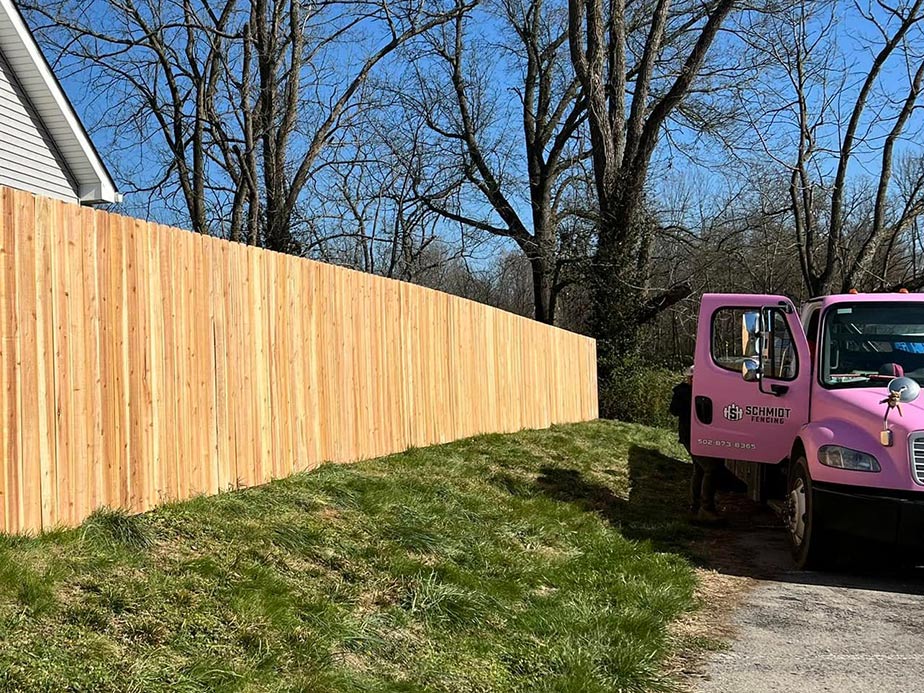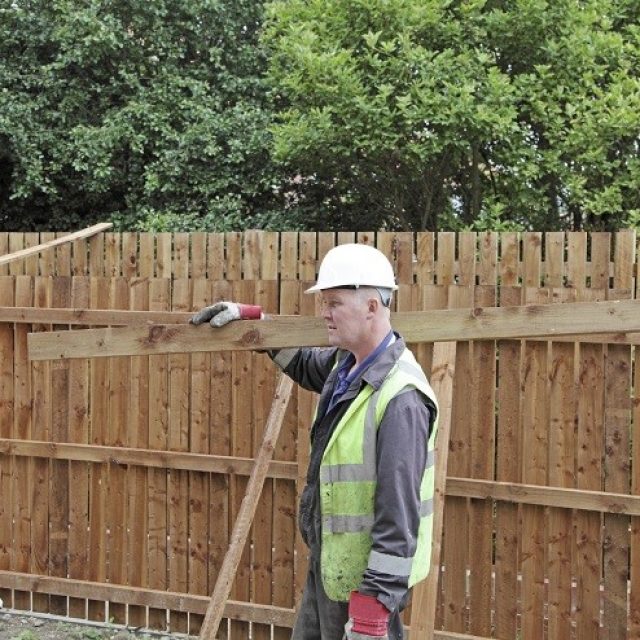How to Identify Usual Concerns That Need Immediate Fencing Fixing
It is vital to identify problems before they end up being larger troubles when it comes to maintaining your fence. Routinely examining for indicators of deteriorating wood, leaning panels, or corrosion can conserve you money and time over time. You may not recognize exactly how weather and insects can endanger your fencing's honesty. Let's explore the usual indicators that suggest your fencing requires immediate attention, so you can keep your home safe and looking its finest.
Indicators of Rotting Wood in Wooden Fences
Have you noticed your wooden fence looking a bit even worse for wear? If so, it may be time to inspect for signs of decomposing timber. Take a look at the base of the messages and panels for soft areas. If you push on the wood and it feels spongy or crumbles, that's a clear indication of rot. Next off, try to find discoloration or dark places on the wood-- these typically signal wetness damage. Take note of any peeling off paint or coating, as this can expose the timber to further degeneration. Additionally, a poignant, musty odor can indicate fungal development. Don't neglect to evaluate joints and links; if they hang or crumbling, the wood below is most likely compromised. By capturing these indications early, you can protect against much more substantial damages and keep your fencing standing solid. Regular maintenance is essential to extending the life of your wood fence.
Leaning or Tilting Fence Panels
It's vital to understand what triggered it if you've seen your fencing panels leaning or tilting. This issue might indicate underlying structural damages that needs your focus. Allow's check out the common causes and the repair work alternatives readily available to get your fencing back fit.

Reasons of Leaning Panels
When you see your fence panels leaning or tilting, it's commonly a sign of underlying problems that require dealing with. One typical reason is insufficient drainage; extreme water can erode the dirt around the fence posts, compromising their assistance. An additional offender could be strong winds or tornados that press against the panels, specifically if they're not correctly anchored. In addition, the all-natural settling of dirt in time can create messages to change, bring about a tilt. Pests, like termites, can endanger the stability of wooden panels, causing them to lean. Inadequate installation techniques may result in panels not being securely established, leaving them at risk to leaning under stress. Address these concerns promptly to maintain your fence's honesty.
Signs of Structural Damage
Seeing leaning or turning fence panels can be worrying, as these problems usually indicate structural damage that requires immediate interest. When your fence starts to lean, it might indicate that the blog posts are changing or that the soil around them has eroded. Pay very close attention to gaps between articles or panels, as these can also suggest instability. deck builder. Furthermore, check for cracks or splintering in the wood, which can damage the total framework. It can jeopardize the integrity of the fencing if you notice corrosion or rust on steel elements. Keep in mind, overlooking these indications can bring about more extreme damage down the line, so it's important to analyze the circumstance without delay and do something about it before it intensifies
Repair Service Options Available

Corrosion and Deterioration in Metal Fences
If you possess a steel fence, you may see rust and deterioration slipping in in time, particularly if it's subjected to moisture. These issues not just affect the look of your fencing but can also compromise its structural integrity. To identify rust, look for reddish-brown places or patches, which suggest the metal is oxidizing. Rust can spread promptly if left untreated, leading and deteriorating the fencing to expensive repairs.To tackle rust and deterioration, you must clean up the impacted areas with a cable brush and use a rust-inhibiting primer. As soon as the guide dries, take into consideration painting the fencing with a weather-resistant paint to secure it additionally. Regular maintenance, such as inspecting for indicators of rust and repairing paint as required, will aid extend your fencing's life-span. Dealing with these concerns without delay ensures your metal fencing remains strong and aesthetically appealing for several years ahead.
Splits and Divides in Vinyl Fence

Reasons For Vinyl Damages
Plastic fence is popular for its durability, yet it can still struggle with fractures and splits because of different aspects. One major reason is extreme temperature changes. It can weaken the product over time when vinyl increases in the heat and agreements in the chilly. In addition, exposure to extreme sunlight can cause UV deterioration, making the plastic fragile. Physical effects, like hefty branches or unintended crashes, can likewise create splits. Poor installation or making use of low-quality products can intensify these issues. Moreover, age contributes; older vinyl fencing is much more prone to damage. Regular evaluations can help you recognize these aspects before they result in substantial issues. Take aggressive actions to assure your fencing remains intact and strong.
Repairing Cracks Properly
Although fractures and splits in your vinyl fence can be concerning, addressing them promptly can stop additional damages and preserve the fencing's appearance. Initially, evaluate the dimension of the split. For little cracks, a vinyl repair service kit typically consists of adhesive that can bond the sides, supplying a smooth fix. Tidy the area completely before applying the glue, guaranteeing it sticks effectively. For larger divides, you might need to use a vinyl spot. Cut the patch to dimension, apply glue around the sides, and press it strongly onto the split. Allow it to cure based on the supplier's directions. Normal maintenance and fast repair work can expand your fencing's life-span, maintaining it looking excellent for several years to come.
Loosened or Missing Out On Fence Blog Posts
Loose or absent fence posts can threaten the security of your whole fencing framework. If you see any type of posts leaning or wobbling, it's necessary to deal with the concern promptly. Look for any kind of indications of movement, as this can bring about more damage with time. You can quickly assess the issue by giving each article a gentle shake-- if it really feels unsteady, it's time to take action.For missing articles, you'll require to replace them asap to preserve your fence's stability. Make sure they're safely secured in the ground with concrete or crushed rock for included security when you set up new posts. If a blog post hangs, more tighten it by including added support or driving it deeper right into the ground.Ignoring these concerns can bring about larger problems, like spaces in your fencing and even full collapse. So, keep an eye on your blog posts and remain proactive regarding repair work!
Damages From Climate and Natural Environment
Weather and natural elements can inflict havoc on your fencing, leading to various kinds of damage that need punctual interest. Heavy rainfall can create wood to rot, making it unstable and weak. Snow accumulation may flex or break panels, while strong winds can root out fencing articles or trigger sections to lean.If you see splits or splintering in wooden fences, it suggests drying out because of extreme sunlight you can try here exposure. Meanwhile, metal fencings can corrosion if protective finishings put on off, especially in moist or coastal areas.Inspect your fencing routinely after storms or severe climate to capture any type of damage early. Dealing with these problems swiftly can save you from costly repair services down the line. Do not wait till a tiny problem develops into a major one; stay proactive and keep your fence top form to preserve both capability and visual charm.
Insect Problem and Termite Damages
It's necessary to act quickly to protect against further damage when you discover signs of parasite problem or termite damage. Seek mud tubes along your fencing or hollow-sounding timber, as these suggest termites are at work. You could likewise see little openings or frass, which is termite droppings appearing like sawdust. If you spot any one of these indications, it's time to evaluate the damage.Don' t delay until it's far too late; parasites can endanger your fence's stability. Inspect the surrounding area for beetles or ants, as they might be contributing to the issue. If you presume an infestation, think about contacting an insect control expert to deal with the issue.repairing and verify or replacing afflicted areas of your fencing promptly not only restores its strength yet additionally protects against insects from spreading additionally. Stay alert to maintain your residential or commercial property pest-free and secure.
Frequently Asked Concerns
Exactly how Commonly Should I Evaluate My Fencing for Damage?
You ought to evaluate your fencing at the very least twice a year, preferably during spring and fall. Routine checks help you detect damage early, conserving you time and cash on fixings while keeping your residential property's look and safety and security.
Can I Fix a Fence Myself or Work With a Specialist?
You can most definitely repair a fence on your own if you have the right tools and abilities. Nevertheless, working with a professional assurances high quality job and conserves you time, specifically for complicated repairs or extensive damage.
What Tools Are Required for Basic Fence Repairs?
For fundamental fence repair work, you'll need tools like a hammer, screwdriver, pliers, a saw, a level, and measuring tape. deck builder. Relying on the fixing, you could additionally call for nails, screws, or replacement boards
Just How Much Does Fence Repair Usually Cost?
Fence fixing prices differ commonly, but you can anticipate to pay between $200 and $1,500 depending on products, labor, and degree of damage. It's clever to get multiple quotes for the ideal bargain.
When Is the most effective Time of Year for Fence Repair Works?
The very best time for fence repairs More Bonuses is throughout light weather condition, usually in springtime or very early fall. You'll avoid extreme temperatures, making it less complicated to work and guaranteeing the materials set effectively for lasting resilience (deck builder). Seeing turning or leaning fence panels can be alarming, as these problems typically suggest structural damages that needs prompt attention. Absent or loosened fence messages can undermine the stability of your entire fencing framework. Snow accumulation might flex or damage panels, while solid winds can uproot fencing blog posts or create sections to lean.If you observe cracks or splintering in wooden fences, it's an indicator of drying out due to extreme sun exposure. Steel fences can corrosion if safety coverings wear off, especially in seaside or moist areas.Inspect your fencing routinely after tornados or severe climate to catch any kind of damages early. Fencing repair work costs vary widely, yet you can anticipate to pay between $200 and $1,500 depending on materials, labor, and degree of damage